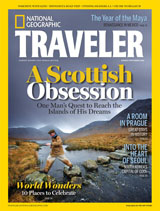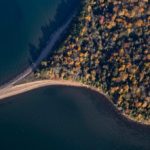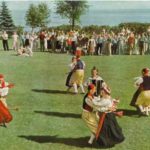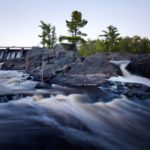Duluth and the North Shore in Aug/Sept issue of National Geographic Traveler
 “Road trips up the Minnesota shore of Lake Superior begin in Duluth, an industrial harbor town at the southern end of a wooded triangle called the Arrowhead and two-lane Highway 61. Also called North Shore Scenic Drive, the paved boundary between woods and waters delivers views of the ancient volcanic basalt cliffs that plunge into Lake Superior, so vast it merges with the sky on the horizon. At the turn of the 20th century, outbound ships loaded with northern Minnesota’s prized iron ore ranked Duluth among the U.S.’s busiest ports.”
“Road trips up the Minnesota shore of Lake Superior begin in Duluth, an industrial harbor town at the southern end of a wooded triangle called the Arrowhead and two-lane Highway 61. Also called North Shore Scenic Drive, the paved boundary between woods and waters delivers views of the ancient volcanic basalt cliffs that plunge into Lake Superior, so vast it merges with the sky on the horizon. At the turn of the 20th century, outbound ships loaded with northern Minnesota’s prized iron ore ranked Duluth among the U.S.’s busiest ports.”
Road Trip: Northern Minnesota
Recommended Links:
Leave a Comment
Only registered members can post a comment , Login / Register Here














10 Comments
Bret
about 12 years agowildgoose
about 12 years agoNateL
about 12 years agoHappyHippo
about 12 years agoLithis
about 12 years agomevans
about 12 years agoemmadogs
about 12 years agoThe Big E
about 12 years agoRyan Sharrow
about 12 years agowildgoose
about 12 years ago